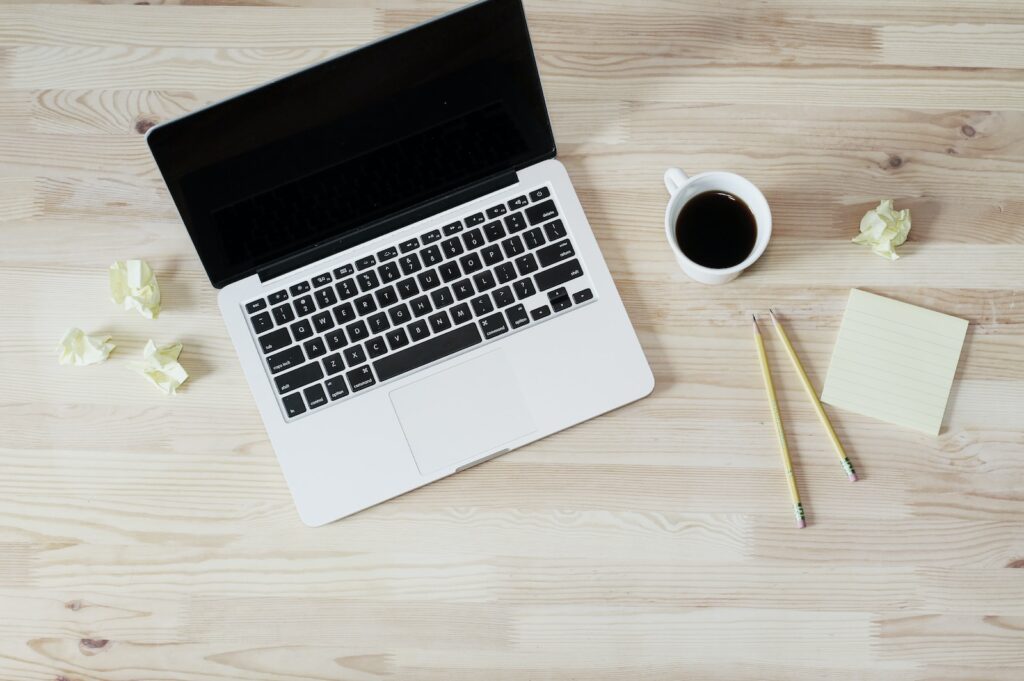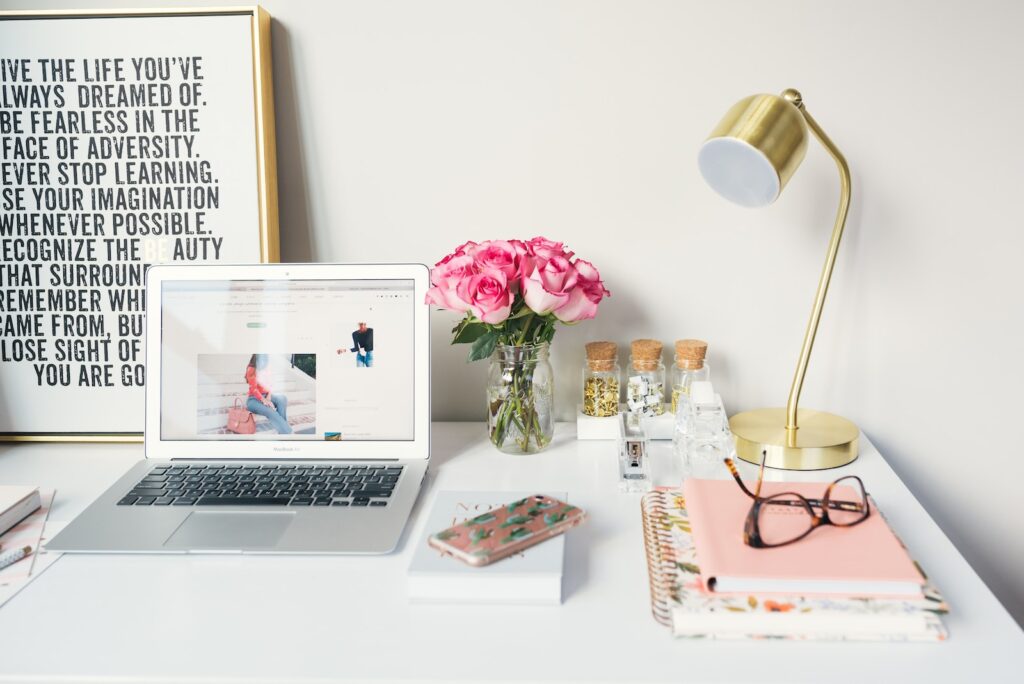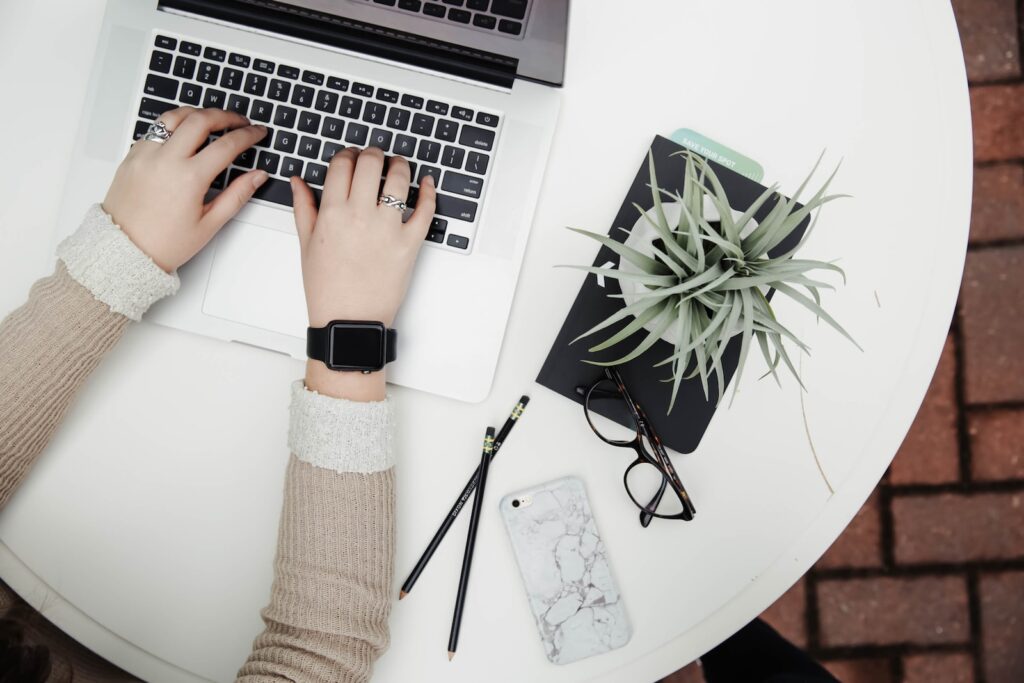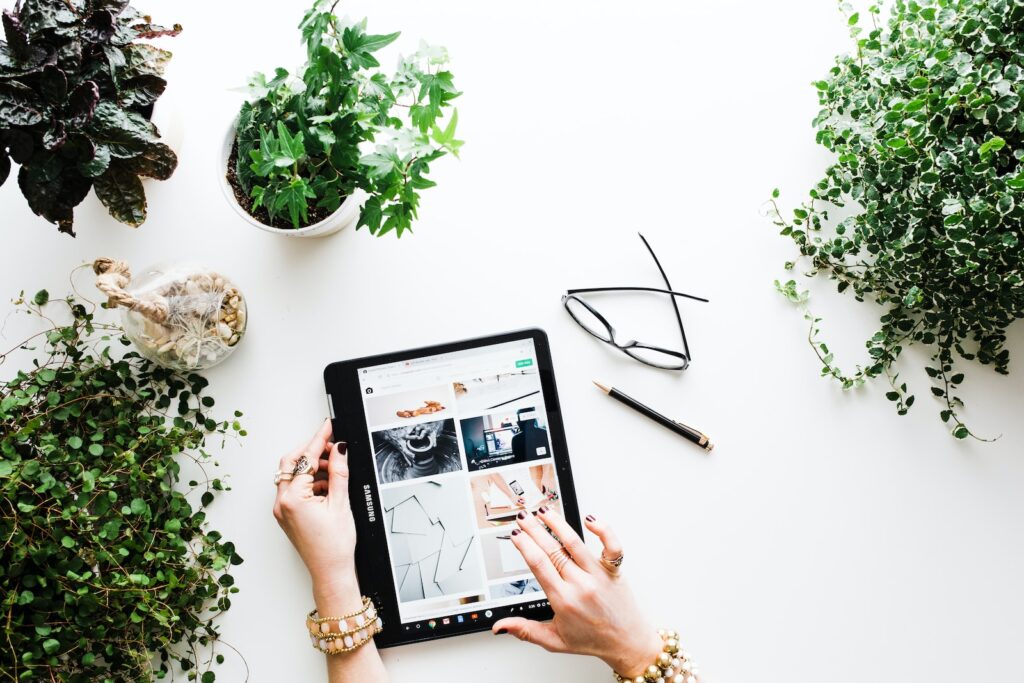Are you tired of cluttered and busy blog designs that distract from your content? Perhaps it’s time to consider a minimalist approach.
Minimalist blog design is all about simplicity, clean lines, and white space. It allows readers to focus on the most important aspect of your blog – your message.
Minimalism has become increasingly popular in recent years, with many bloggers opting for this style over more traditional designs. Not only does it provide an aesthetically pleasing look, but it also improves user experience by making navigation easier and reducing load times.
In this article, we will explore the key elements of minimalist blog design and how you can achieve this style on your own website. So get ready to declutter and simplify your blog design!
What Is Minimalist Blog Design?

Minimalism is one of the most popular design trends in recent years. It’s a style that emphasizes simplicity, cleanliness, and functionality over all else.
In the world of blogging, minimalist blog design has become increasingly popular due to its ability to make content shine without any distractions. But what exactly is minimalist blog design?
Characteristics of minimalist blog design include clean lines, white space, and a focus on typography. This allows for an uncluttered layout that draws attention to the content itself rather than any extraneous details or decorations.
Less is truly more when it comes to this particular style. Examples of minimalist blogs can be found across various niches, from lifestyle bloggers who feature their personal musings and reflections to business owners who use a blog as part of their marketing strategy.
The key element that ties them together is their commitment to keeping things simple and elegant. Whether you’re looking for inspiration for your own blog or simply appreciate beautiful design, there’s something about minimalism that just works.
By eschewing unnecessary elements and focusing solely on what matters – namely the written word – minimalist blog design offers readers an experience that’s both refreshing and calming. There are no distractions here; only pure information presented in the most straightforward way possible.
So why not give it a try? Your readers (and your sanity) will thank you!
The Benefits Of Minimalism In Blog Design

Minimalism in blog design has become increasingly popular over the years, and for good reason. The importance of user experience cannot be overstated, as it is a key factor in determining whether or not readers will revisit your site.
A minimalist approach to design can help create a seamless and enjoyable reading experience. One of the main benefits of minimalism in blog design is its ability to balance simplicity and functionality. By eliminating unnecessary clutter and distractions, you can focus on presenting information clearly and effectively.
This helps users navigate your site with ease, leading to increased engagement and retention rates. In addition to improving user experience, a minimalist approach to blog design also has practical benefits. It reduces page load times, improves search engine optimization (SEO), and makes your site more mobile-friendly.
These factors contribute to better overall performance and visibility online. Ultimately, by prioritizing simplicity and function over complexity and excess, you can create a clean and effective blog that resonates with readers long after they leave your site.
Simplifying Your Layout And Navigation

You might think that the previous section has already covered all there is to know about minimalist blog design. But wait, there’s more! In this next section, we’ll delve deeper into the practical aspects of simplifying your layout and navigation.
Removing clutter is key when it comes to achieving a minimalist look for your blog. This means getting rid of anything that doesn’t serve a clear purpose or add value for your readers. Take a critical eye to every element on your page and ask yourself: does this really need to be here? If not, consider removing it altogether.
But minimalism isn’t just about aesthetics – it’s also about improving the user experience. By streamlining your layout and navigation, you can make it easier for visitors to find what they’re looking for and engage with your content.
Here are some tips to keep in mind:
- Use plenty of white space around text and images to give them room to breathe
- Limit the number of menu items in your navigation bar (ideally no more than 5-7)
- Group related content together using categories or tags
- Avoid cluttering up your sidebar with too many widgets or ads
By following these guidelines, you’ll create a cleaner, more user-friendly website that reflects the simplicity and elegance of minimalist design.
Remember: good design should always prioritize function over form. Ultimately, the goal of simplifying your layout and navigation is not just to make things look pretty – it’s to enhance usability and ensure that users have an enjoyable experience interacting with your site.
So if you haven’t already taken steps towards minimizing clutter on your blog, now is the time to start!
Embracing White Space And Contrast

Exploring minimalist aesthetics is all about simplicity and functionality. In the world of blog design, it means using only what’s necessary to convey your message.
Embracing white space is one of the essential elements in minimalist blog design. Utilizing negative space may seem counterintuitive at first. However, it helps create a more visually appealing and easier-to-read website for your readers.
When you use too many visual elements on your page, it can be overwhelming to navigate through them all. By leaving ample whitespace around text blocks or images, your content becomes much more digestible.
Ultimately, embracing white space and contrast will make your blog stand out from the crowd while still providing an excellent user experience. It takes practice to master these techniques but incorporating them into your overall design philosophy will pay dividends over time as they become second nature.
Remember that less is often more when it comes to blogging!
Choosing The Right Color Palette

As we mentioned earlier, minimalist blog design is all about simplicity and elegance. But that doesn’t mean you have to limit yourself when it comes to color choices. In fact, choosing the right color palette can make or break your design.
Color psychology plays a crucial role in determining which colors will work best for your blog. For example, blue is often associated with trust and reliability, while green represents growth and harmony. Think about what emotions or feelings you want to evoke in your readers and choose colors accordingly.
If you’re not sure where to start, there are plenty of online color scheme generators available that can help take the guesswork out of creating an effective color palette. These tools allow you to experiment with different combinations of hues until you find one that resonates with your brand and message.
Remember, the goal is to create a cohesive look that reflects your style without overwhelming your readers’ senses.
Typography And Font Choices

After choosing the right color palette for your minimalist blog design, it’s time to focus on typography and font choices.
Typography hierarchy refers to the arrangement of text elements in a way that creates visual interest and guides readers through the content. It involves using different font sizes, weights, and styles to emphasize important information and create a sense of flow.
To effectively establish typography hierarchy, you need to understand font pairing techniques. This means selecting two or more complementary fonts that work well together to convey your brand’s personality while ensuring readability. The most common approach is to pair a serif typeface with a sans-serif typeface, creating contrast between traditional elegance and modern simplicity.
When choosing fonts for your minimalist blog design, remember that less is more. Stick to one or two primary fonts and use them consistently throughout your website. Avoid overcomplicating things by using too many different fonts or styles as this can make your site look cluttered and confusing.
Keep it simple, clean, and easy-to-read so that visitors can focus on what really matters – your content.
Effective typography hierarchy and font pairing techniques are crucial components of any successful minimalist blog design strategy. By following these guidelines and keeping things simple yet visually appealing, you’ll be able to create an engaging user experience that keeps visitors coming back for more without sacrificing style or functionality.
Putting It All Together: Examples Of Effective Minimalist Blog Design

Picture this: You open a minimalist blog and are greeted by clean lines, white space, and simple typography.
As you scroll through the content, it’s clear that everything has been intentionally placed – every image, paragraph break, and font choice is deliberate. This is the essence of effective minimalist design.
Balancing content and aesthetics is key in achieving an effective minimalist blog design. The focus should always be on delivering valuable content to the audience while presenting it in a visually appealing way.
One way to achieve this balance is by using plenty of white space around text and images, which helps to draw attention to the most important elements.
Incorporating multimedia can also elevate your minimalist blog design. High-quality photos or videos can add interest without detracting from the simplicity of the overall look.
Just make sure that any media used serves a purpose beyond just decoration – it should enhance the message being conveyed through written content.
By following these guidelines for creating an effective minimalist blog design, you’ll ensure that your content shines while still looking sleek and modern.
Key Takeaways
- Minimalist blog design emphasizes simplicity, clean lines, and white space.
- It improves user experience by making navigation easier and reducing load times.
- Minimalist design allows the content to shine without distractions.
- Simplifying layout and navigation by removing unnecessary clutter is important.
- Embracing white space and contrast enhances visual appeal and readability.
- Choosing the right color palette and typography is crucial for minimalist design.
- Minimalist design can still incorporate images and multimedia content.
- Negative space can be used creatively to draw attention and create balance.
- Minimalist design may not be suitable for all types of blogs or niches.
- There are tools and resources available to help create minimalist blog designs.
Useful Table
| Key Elements of Minimalist Blog Design |
|---|
| Simplicity, clean lines, and white space |
| Typography hierarchy and font choices |
| Effective use of white space and contrast |
| Choosing the right color palette |
| Simplified layout and navigation |
| Purposeful incorporation of images |
| Consistency in design and branding |
Frequently Asked Questions
What Are Some Common Mistakes To Avoid When Designing A Minimalist Blog?
When designing a minimalist blog, it’s important to avoid common mistakes such as creating a cluttered layout or lacking contrast.
To achieve the desired simplicity and elegant look, choose a color scheme that is minimalistic and easy on the eyes. Consider using black and white with one accent color for a timeless feel.
Typography should also be kept simple but legible, with sans-serif fonts being popular choices.
Remember to keep your design consistent throughout the entire website for cohesion.
By following these tips, you can create an effective minimalist blog design without falling into common pitfalls.
Can A Minimalist Design Still Incorporate Images And Multimedia Content?
While minimalist blog design can be a great way to simplify your website and streamline the user experience, it’s important to consider the impact on SEO.
According to recent studies, websites with more images tend to have higher engagement rates than those without any multimedia content. However, there are pros and cons when incorporating images into a minimalist design; while they may enhance visual appeal, too many can clutter the page and slow down load times.
It’s important to strike a balance between functionality and aesthetics in order to optimize both user experience and search engine rankings.
How Can I Make Sure My Minimalist Design Is Still Visually Appealing And Engaging To Readers?
When creating a minimalist design, it’s important to keep in mind that simplicity doesn’t have to mean boring.
By using negative space creatively and keeping typography simple and effective, you can make your design visually appealing and engaging for readers.
Negative space is the area around an object or text that isn’t filled with anything else. Using this space intentionally can draw attention to key elements of your design, while also creating a sense of balance and harmony.
Additionally, choosing a font that is easy to read and scaling it appropriately will ensure that your content remains accessible and enjoyable for all types of readers.
Overall, by focusing on these key components, you can create a minimalist design that not only looks great but also enhances the user experience.
Is Minimalist Design Appropriate For All Types Of Blogs, Or Are There Certain Niches That It Works Best For?
When it comes to blog design, there are many different approaches you can take. One popular option is minimalist design, which involves using a simple and streamlined layout with minimal graphics or decoration.
While this style can work well for certain niches – such as personal blogs or lifestyle sites – it may not be the best choice for every type of blog.
For example, if your blog focuses on visual arts or graphic design, you may want to use a more maximalist approach that showcases your creativity and skills.
Ultimately, whether you choose minimalist or maximalist design will depend on your goals, audience, and content strategy. While minimalism has its advantages in terms of simplicity and ease of navigation, it may not always be the most engaging or visually appealing choice for niche bloggers looking to stand out from the crowd.
Are There Any Specific Tools Or Resources That Can Help Me Create A Minimalist Blog Design?
Minimalist blog design tools are a godsend for bloggers who want to create clean and simple websites without spending too much time or money.
With so many options available online, finding inspiration for minimalist design has never been easier.
From free templates to paid software, there’s something out there for everyone.
And the best part? These tools make it easy to create stunning designs with just a few clicks of a button.
So whether you’re starting from scratch or looking to revamp your existing site, investing in some quality minimalist blog design tools is definitely worth considering.
Conclusion
In conclusion, creating a minimalist blog design may seem daunting at first, but it can greatly enhance the user experience for your readers.
By avoiding common mistakes such as cluttered layouts and excessive use of colors, you can create a clean and organized aesthetic that is easy to navigate.
Remember, minimalism does not mean sacrificing visual appeal or multimedia content. You can still incorporate images and videos into your design while maintaining simplicity. Just be sure to choose high-quality visuals that align with your overall brand message.
Overall, a minimalist design is appropriate for any type of blog, as long as it fits with your niche and audience preferences. Utilizing tools like Canva and WordPress themes designed specifically for minimalism can help make the process easier.
Embracing a minimalist approach not only creates an aesthetically pleasing website but also symbolizes the importance of prioritizing quality over quantity in all aspects of life.

